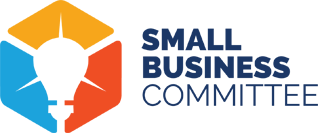 Small business owners and representatives of the drone industry testified before a Congressional subcommittee about the FAA’s efforts to move commercial drone regulation forward.
Small business owners and representatives of the drone industry testified before a Congressional subcommittee about the FAA’s efforts to move commercial drone regulation forward.
Speaking before the House Small Business committee,
representatives from the FAA, AUVSI, the Small UAV Coalition, airports, and others testified about the need for sensible regulation to support the growing industry while dealing with safety issues. “The FAA projects that 90 percent of drone owners will be small businesses,” says the Committee’s summary “… making clear and sensible regulation essential as these entrepreneurs try to get startups off the ground and improve existing small businesses day-to-day operations through the use of this technology.
All of the speakers seemed to agree on the economic impact of the drone industry, particularly for small businesses, and the imperative need for the rapid development of regulations.
“We are bearing witness to the next great aviation renaissance,” said Rep. Cresent Hardy, R-NV, Chairman of the House Small Business Committee’s Subcommittee on Investigations, Oversight and Regulations. “Advances in technology have cleared the way for a reality that, only a short time ago, was merely a dream.”
“Unmanned aircraft systems, or UAS, increase human potential, allowing us to execute dangerous or difficult tasks safely and efficiently,” testified Brian Wynne on behalf of the Association for Unmanned Vehicle Systems International (AUVSI). “From inspecting pipelines to surveying bridges to filming movies, UAS help save time, save money and, most importantly, save lives. It is no wonder why thousands of businesses—small and large—have already embraced this technology, and many more are considering integrating it into their future operations.”
“While we appreciate that Part 107 allows for waivers to operate beyond the visual line of sight (BVLOS) and over people, the FAA’s next phase of regulations must provide for even more efficient approval of these types of operations or the United States will fail to develop the robust commercial drone industry that other countries are actively pursuing,” added Gabriel Dobbs, the Vice President of Business Development and Policy at Kespry Inc., who testified on behalf of the Small UAV Coalition. “A rancher in Nevada or a farmer in North Carolina cannot fully benefit from drone technology if he must follow his drone in his truck to maintain the visual line of sight while inspecting his property.”
The FAA reported that 6,768 people have taken the Part 107 test as of September 20. The test has an 88 percent pass rate; 14,909 remote pilot certificate applications have been submitted through the FAA’s website and 10,966 of those certificates have been processed. Waivers seem to have stalled since the 79 approved on day 1, mostly holdovers from Section 333: the FAA says that 552 waiver requests have been submitted and 79 approved (which were announced on the first day). No airspace authorizations have been approved.

Miriam McNabb is the Editor-in-Chief of DRONELIFE and CEO of JobForDrones, a professional drone services marketplace, and a fascinated observer of the emerging drone industry and the regulatory environment for drones. Miriam has penned over 3,000 articles focused on the commercial drone space and is an international speaker and recognized figure in the industry. Miriam has a degree from the University of Chicago and over 20 years of experience in high tech sales and marketing for new technologies.
For drone industry consulting or writing, Email Miriam.
TWITTER:@spaldingbarker
Subscribe to DroneLife here.







I want to find out how to take the 107 test . and how much it cost. I am a small business owner my husband does computer repair and I have opened the first drone park in the state of Arkansas and have the first drone leagues in the state .I plan to teach aerial photography and compete in drone tournaments.I have patented our name of AREA 501 DRONES of Clinton Arkansas. . 501-745-3487
Hi Marina: Check out the links on the recent DRONELIFE article, “How to Pass the Part 107 Test: Part 2” which will give you all of the links to the FAA’s information and study guides. The test costs about $150 – you will need to make an appointment to take the test at an FAA approved testing site (link to the list in the article above). Good luck!
how do I take the FAA 107 test and how much does it cost? I am a small business owner I have opened the first drone park in the state of Arkansas and also have the first drone leagues in the state.